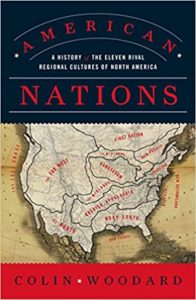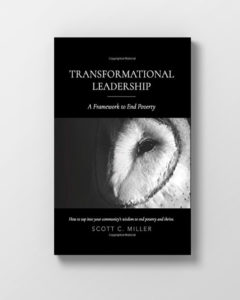 Colin Woodard wrote a beautiful book titled American Nations, a History of the Eleven Rival Regional Cultures of North America. He answers the question, “Why do Americans have such a difficult time agreeing on basic issues like the meaning of freedom, the role of religion in public life, or what it means to be an American?” His primary answer is that we were settled by 11 separate nations, giving each of these diverse regions of the country their own distinguishing ideals. Colin’s book is a brilliant page turner, and I am not going to spend much time reiterating what he says. What I want to point out is this: To reduce poverty rates in America, we must understand the distinct beliefs of each region.
Colin Woodard wrote a beautiful book titled American Nations, a History of the Eleven Rival Regional Cultures of North America. He answers the question, “Why do Americans have such a difficult time agreeing on basic issues like the meaning of freedom, the role of religion in public life, or what it means to be an American?” His primary answer is that we were settled by 11 separate nations, giving each of these diverse regions of the country their own distinguishing ideals. Colin’s book is a brilliant page turner, and I am not going to spend much time reiterating what he says. What I want to point out is this: To reduce poverty rates in America, we must understand the distinct beliefs of each region.
I was raised in what Colin calls the Midland region, which, he says, is arguably the most “American” of the 11 nations. The region was founded by the English Quakers around the values of pluralism and organized around the middle class. “. . . government has been seen as an unwelcomed intrusion and political opinion has been moderate, even apathetic . . .,” he writes.
The Midlands region stretches from its roots in the Delaware Bay throughout Middle America and the Heartland, comprising Pennsylvania, Maryland, southern New Jersey, northern Delaware, central Ohio, Indiana, Illinois, northern Missouri, most of Iowa, and the eastern halves of South Dakota, Nebraska, and Kansas. It includes the cities of Chicago and St. Louis. People in this region largely believe society should be organized to benefit ordinary people; are skeptical of top-down government intervention; and are considered to hold the standard American political viewpoint, containing the key “swing vote” in every national debate. The Midlands functions as a powerful mediating force, agreeing with only some of its neighbors’ more extreme views.
I am very much a Midlander, having lived in Pennsylvania from the ages of 4 to 9. We then moved to Rochester, N.Y., the region that Colin calls Yankeedom. This region was founded in Massachusetts Bay as a religious utopia in the New England wilderness. The emphasis was on education, local political control, and the pursuit of the greater good of the community. Yankees believe, more than any other region, that government can improve lives and galvanize their resistance to aristocrats, corporations, and any other outside power. Also, very much me. Yankeedom stretches across upper New York State, northern strips of Pennsylvania, Ohio, Indiana, Illinois, and Iowa, parts of the eastern Dakotas, Michigan, Wisconsin, and Minnesota.

Hopefully, this brief summary has whetted your appetite to look at Colin’s book and identify your own region’s roots. He argues that it is very difficult to change the belief system of a region. In fact, people tend to migrate to regions where they feel an affinity. He has mapped out the regional identity of all of the 3007 U.S. counties, which on the one hand is helpful although overall his ideas pose a challenge to reducing poverty rates.
The Call to Adventure to address poverty has to be messaged with different talking points, depending on regional belief systems. While it would be so much simpler to characterize the conflict between red and blue states, it is obviously nuanced by regions and then within individual states in those regions. In fact, from community to community along the borders of Colin’s map of the nation, ideologies can be vastly opposed to one another.
We are unlikely to change our world views easily, but working with people who hold diverse political and religious beliefs for a common goal of supporting people out of poverty is a good starting place for maturing our narrative regarding the ultimate roles and responsibilities from each of the major sectors of community life.
Learn more: Transformational Leadership: A Framework to End Poverty ~ By Scott C. Miller
To learn more about Scott Miller, please see his website here.

